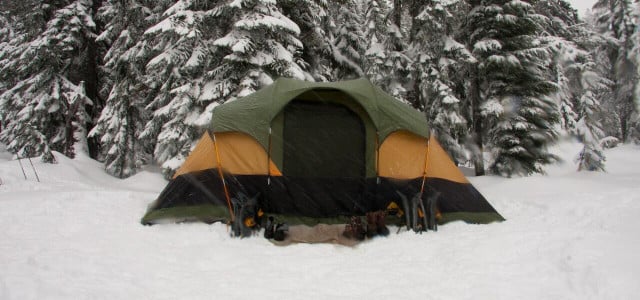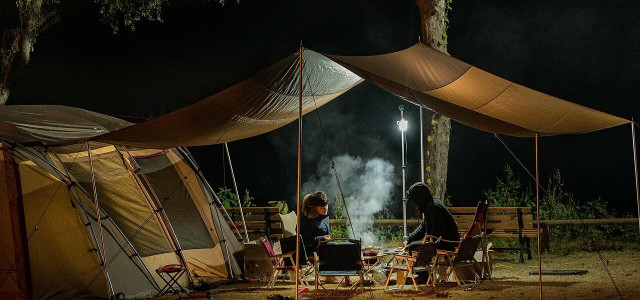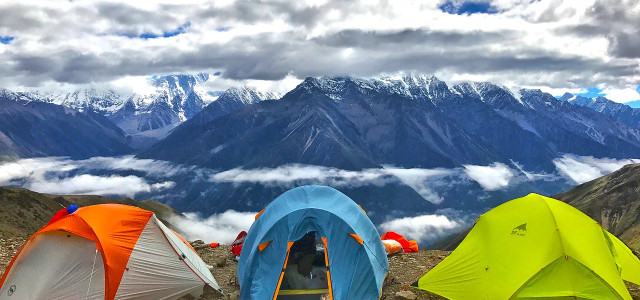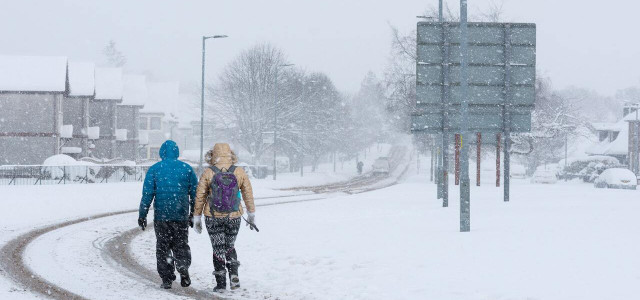If you’re looking for a new activity to try this winter, consider tenting in cold weather. Here are a few crucial safety tips to help you enjoy it.
Cold-weather camping is a fun winter alternative to a beloved summer pastime. While many people believe camping is much more difficult and treacherous when the temperatures drop, it doesn’t have to be. You just need to make sure to prepare properly.
Colder temperatures bring a variety of challenges when it comes to enjoying the outdoors, but it’s still possible to have a blast outside in frigid conditions. Winter sports such as skiing, skating, hockey, ice fishing and sledding are popular for a reason.
You can enjoy some activities year-round, no matter what the weather. Hiking in the winter offers a completely different atmosphere, and tenting in cold weather brings reprieve from pesky mosquitos, hot oppressive temperatures and crowds.
1. Tenting in Cold Weather DO: Bring Proper Equipment for Cold Weather Camping
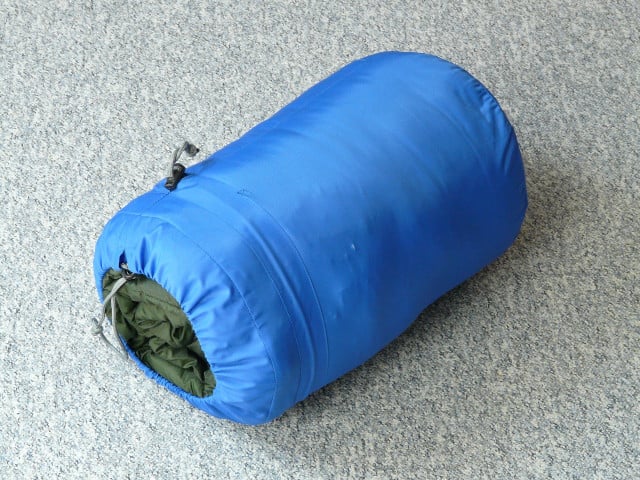
(Foto: CC0 / Pixabay / Hans)
Tenting in cold weather requires a similar set of skills and equipment as summer camping, but you need a few additional items to ensure your safety.
- Choose a stove for wind and cold: Some camping stoves struggle with stronger winds and colder temperatures. Choose a liquid fuel stove featuring a windproof design.
- Stake a tarp over your tent: Tarps help trap additional heat and add a protective layer. They can catch ice and snow and protect your rain fly from condensation that can freeze overnight.
- Proper ventilation: A double-wall tent is preferable for camping in cold weather. Condensation becomes more of an issue with cold nighttime temperatures, and good airflow helps to combat it.
- Choose a snug sleeping bag: The less extra space a sleeping bag has, the quicker it will heat up. If you want to use your summer sleeping bag, bring an extra quilt to provide insulation.
- Pack the right mattress(es): Find a mattress with a heat-reflective layer. For added insulation, blow up an air mattress, place the mattress pad on top, and sleep on the double layer. It will insulate you from the ground.
2. DON’T: Forget to Check the Weather Forecast
Staying informed of the forecast is crucial when tenting in cold weather. Knowing what you’ll be up against goes a long way to keeping you safe. Use resources like the National Forecast Maps to check for precipitation, temperatures, expected wind and any bad weather warnings.
3. DO: Wear Plenty of Layers for Tenting in Cold Weather
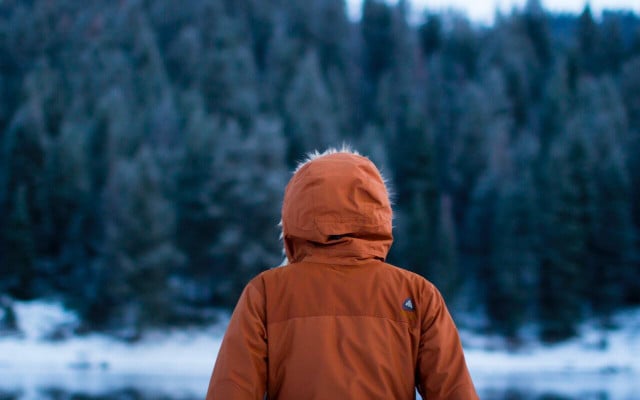


(Foto: CC0 Public Domain / Unsplash / Daniel Bowman )
Layering is an important part of any winter activity, but choosing the right layers is critical for tenting in cold weather. If you run too warm while you sleep, moisture will get trapped in your bag and will cause a drop in body temperature as you cool off. You’ll want 3 layers during the day, though you should aim to sleep in your bottom layer:
- A wicking layer to keep skin dry (wool or polyester)
- A warming layer to stay warm and insulated (fleece, wool, or down)
- A waterproof layer to repel rain, wind, and snow (a windbreaker or parka)
The same principle applies to what you should wear on your feet. Start with thermal socks, add wool boot liners, and then put your boots on. Don’t forget to pack a hat, mittens, and a scarf. You may even want to consider packing an extra set of everything in case it were to get wet.
Tip: Avoid tight-fitting clothing that may restrict blood flow to your extremities.
4. Tenting in Cold Weather DON’T: Be Afraid to Call it Quits
One of the hardest things to do is quit, especially if you’ve been looking forward to something. That said, when it comes to tenting in cold weather, it’s important to know when to throw in the towel. If the forecast changes and it’s no longer safe to be outside, pack your things and head home. Similarly, if you or any of your camping buddies exhibit signs of frostbite or hypothermia, the best thing you can do is to leave and seek medical attention.
5. DO: Bring Enough Provisions
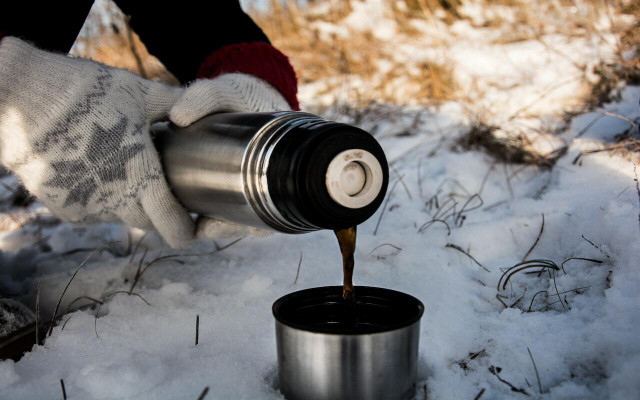


(Foto: CC0 Public Domain / Unspalsh / Arūnas Naujokas)
Calories keep your body warm, so constant snacking and hearty meals can help fuel your body to help keep it generating heat. Get inspired by some of our recipes:
- Homemade trail mix
- Sweet and savory hiking snacks
- Vegan hiking lunches
- Campfire pizza
- Easy vegetarian camping meals
Food isn’t the only important item to bring along when cold-weather camping. Water should be at the top of the list. Hydration is key to staying warm – if you’re dehydrated, your body will become tired and make you feel colder. Drinking warm water vs cold water might help improve circulation if you find yourself cold. Consider using reusable straws to help mitigate the chance of spilling liquid on yourself, which will make you colder. Here are some refreshing and hydrating beverages you might enjoy:
6. DON’T: Hold in Your Pee When Tenting in Cold Weather
Tenting in cold weather makes answering nature’s call a chore. No one wants to leave their nice, toasty sleeping bag to go out and relieve themselves in the cold. While it may be tempting to hold it until morning, that’s not the best choice. It costs your body energy to keep your bladder warm, and you also risk wetting yourself in your sleep.
If you don’t want to go outside, pee in a bottle and dispose of it properly at a later (and warmer) time.
7. Tenting in Cold Weather DO: Pay Attention to Where You Place Your Tent
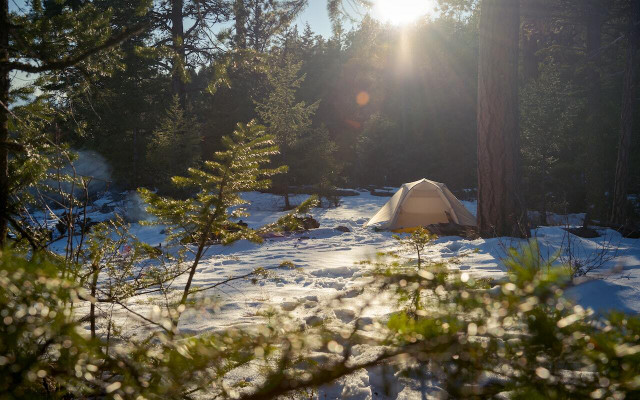


(Foto: CC0 Public Domain / Unsplash / Nathan Karsgaard )
In the summer, it’s easy to tell where the trails and camping sites are. It becomes more of a challenge when the ground is covered in snow, as you won’t necessarily know what’s below the surface. Pitching your tent on delicate ground can have a devastating effect on future plant life. Stick to marked campsites to be safe.
Pitching your tent somewhere more sheltered will protect you from the high winds common in winter months. Another good idea is to orient your tent facing towards the morning light. Not only will this help motivate you to get up in the morning, but it also helps warm your tent.
8. DON’T: Forget to Put Out Your Fire
Campfires and camping go hand in hand. They make it easy to cook your meals, provide ambiance and are a valuable heat source — particularly when you’re tenting in cold weather. When making a fire, use local wood, so you don’t bring in any external diseases or pests.
Camping in the snow is accompanied by the unique challenge of starting a fire on wet ground. That’s where a Swedish fire log comes in handy. It also requires just one log, making it an eco-friendly choice. Just remember to put out your fire pit when you’re finished with it.
9. DO: Keep Your Gear Warm



(Foto: CC0 Public Domain / Unsplash / Hendrik Morkel)
Keeping your body warm is critical when overnighting outdoors in the wintertime, but did you know that you should keep your gear warm too? Most equipment can be kept warm by storing it at the bottom of your sleeping bag while you sleep.
- Keep canisters warm: Canister stoves rely on pressure to run — cold air causes the temperature to drop and reduces that pressure. Sleep with them in your sleeping bag to ensure they’re kept warm.
- Electronics: If you’re relying on electronics for weather forecasts, navigation or communication during your winter camping trip, you’ll need to keep them warm. Batteries deplete faster when cold, so make sure you have backup options and store them close to your body when possible.
- Boot liners and gloves: When you need to get up in the morning, putting your hands and feet into cold gear isn’t fun. Sleeping with this gear keeps it warm and toasty.
Tip: Pack your excess gear around the inside perimeter of your tent to create more insulation.
10. Tenting in Cold Weather DON’T: Go Cold-Weather Camping Alone
As with nearly any outdoor activity, it’s best to do it with other people. There is safety in numbers, especially when dealing with colder temperatures and inclement weather. Taking a buddy with you when you go tenting in cold weather gives you someone to rely on in case of an emergency. Sharing a tent also means that you’ll have the body heat of two people heating the place.
11. DO: Remember Camping Etiquette
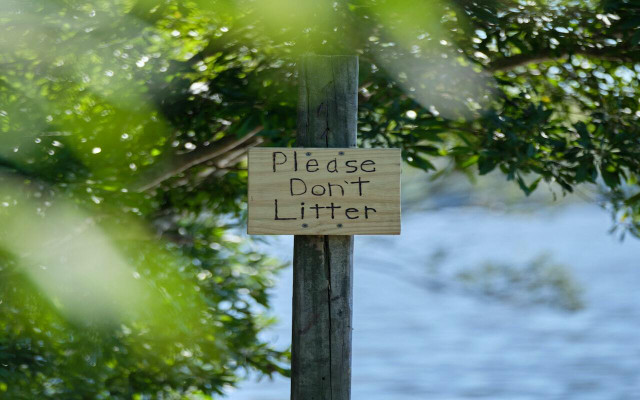


(Foto: CC0 Public Domain / Unsplash / Cam Bradford )
The same general camping rules apply whether the temperatures are hot or cold. When cold-weather camping, it’s still important to leave no trace. That means taking everything out that you bring in. Keeping your campsite clean, noise levels to a minimum, and keeping pets on their leash are common courtesies and are also expected when staying at a campsite.
Camping etiquette makes the experience more pleasant for fellow campers and the local wildlife.
12.Tenting in Cold Weather DON’T: Forget to Secure Your Tent
One crucial step, no matter the weather, is to tether your tent. You need to check this continuously throughout the night when camping in high winds. You’ll also want to flatten your sleeping surface if camping in the snow. This is important to do when you first arrive because snow is harder to manipulate once it melts and refreezes. Consider digging a shallow trough to sleep so you don’t toss and turn during the night.
Where to Go Tenting in Cold Weather
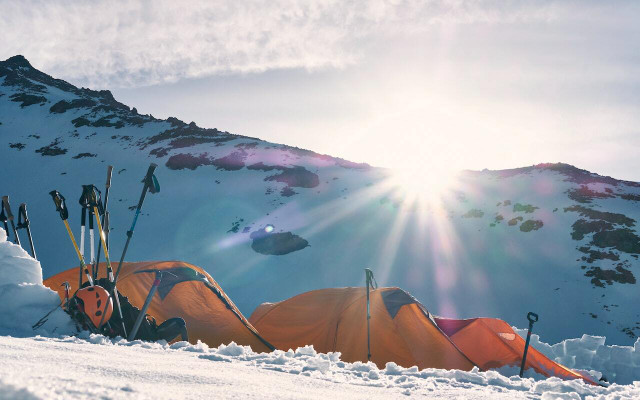


(Foto: CC0 Public Domain / Unsplash / Todd Diemer)
No matter what your definition of cold-weather camping is, there are plenty of great spots across the country to go out and pitch a tent. If you are a fair-weather camper, bookmark these resources for when the temperatures warm up:
- The Best Campsites in New York: 10 Cool Spots
- The 10 Best Oregon State Parks for Camping
- The Best Camping Near Austin: 8 Great Spots
- The 10 Best National Parks to Visit in Winter
- The 7 Best State Parks in New York for Skiing, Boating, or Picnics
- The 8 Best State Parks in Texas for Camping, Hiking, Swimming
- The 8 Best State Parks in California for Stargazing, Hiking, Camping
Read more:
- 11 Tips for an Amazing Backyard Camping Experience
- 12 Self-Care Ideas for Winter
- This Is How You Stay Warm in a Tent: Our 8 Top Tips
- Wild Camping: A Beginner’s Guide to Free Camping in the US & Canada
Do you like this post?






